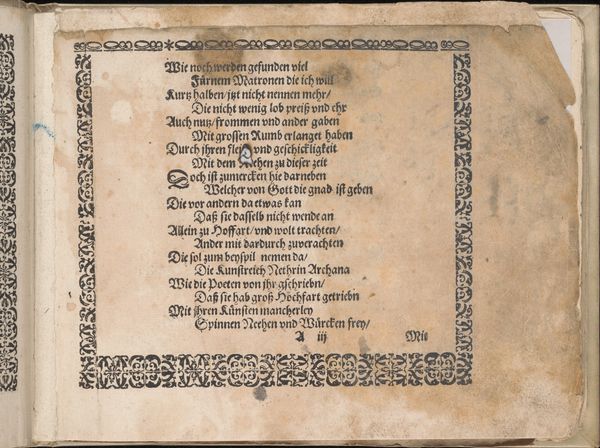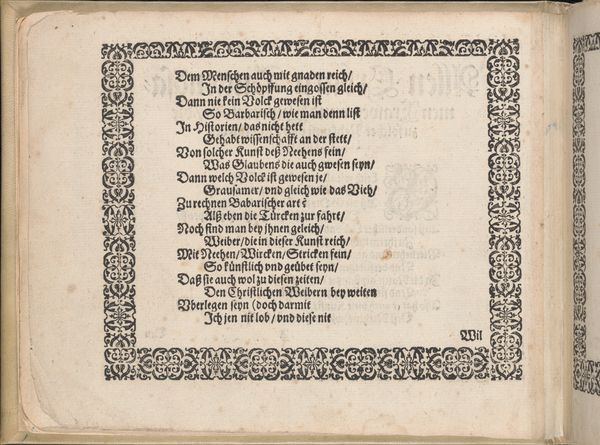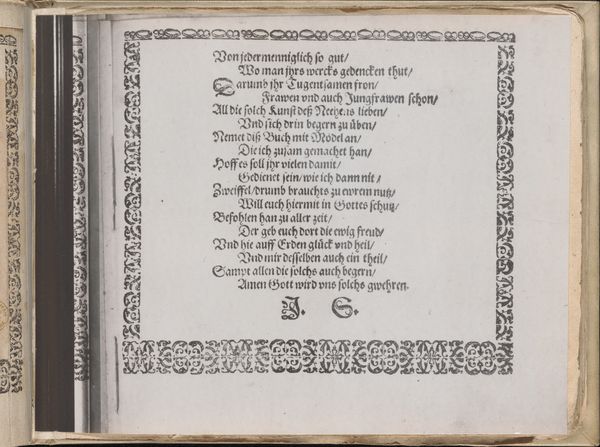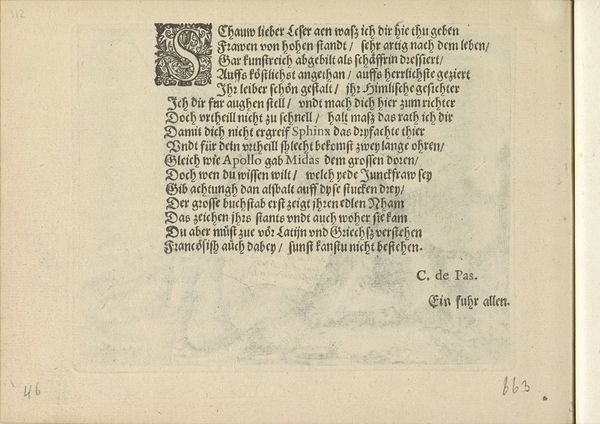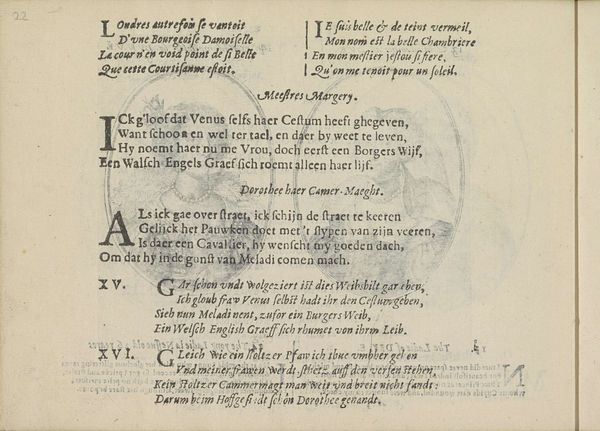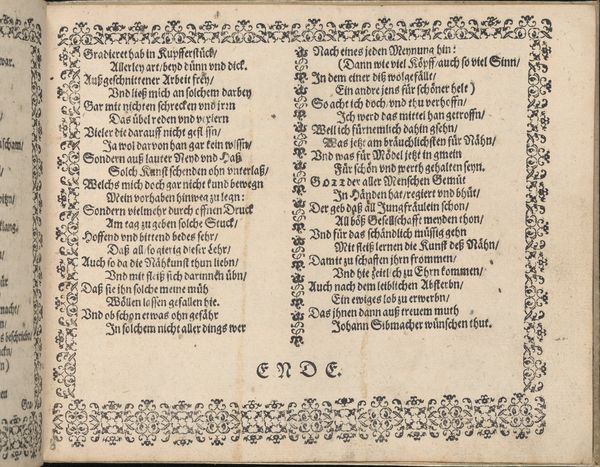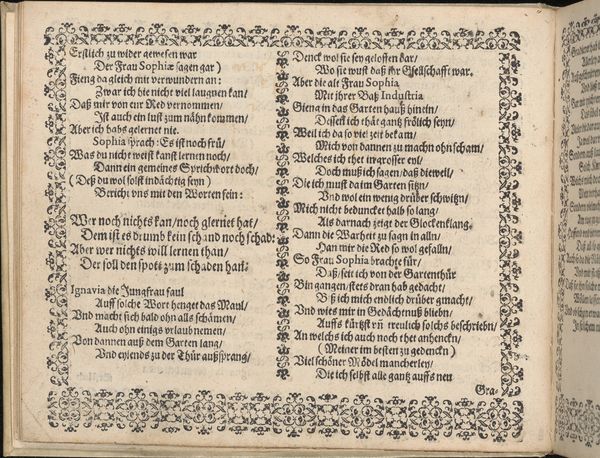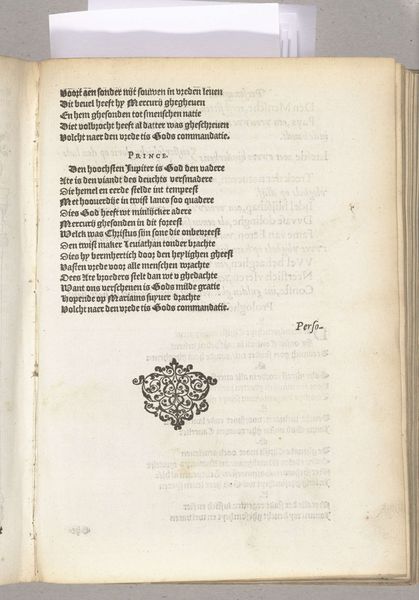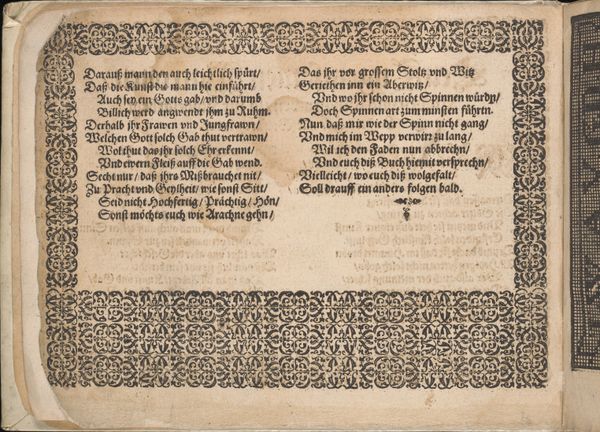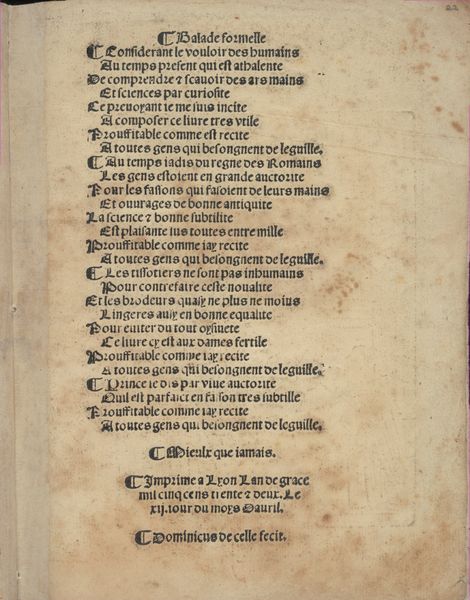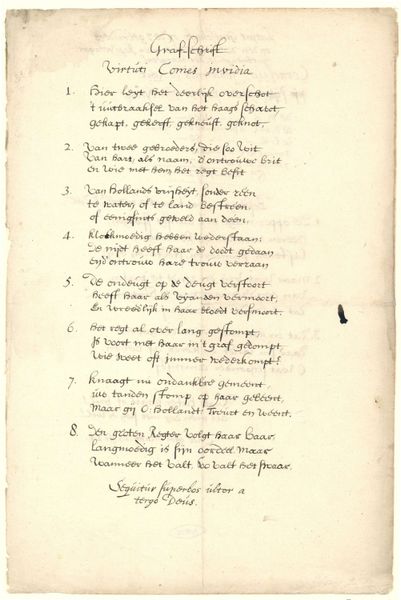
drawing, print, textile, paper, ink
#
drawing
#
water colours
# print
#
book
#
textile
#
paper
#
ink
#
coloured pencil
#
northern-renaissance
#
calligraphy
Dimensions: Overall: 6 1/8 x 7 13/16 in. (15.5 x 19.8 cm)
Copyright: Public Domain
Curator: Johann Sibmacher created this page, "Schön Neues Modelbuch (Page 4 verso)", in 1597. It combines print, drawing, and calligraphy in ink and watercolors on paper, held now in the Metropolitan Museum of Art. It's striking, isn't it? Editor: Immediately, I'm drawn to the contrast between the crisp blackletter text and the more organic, hand-drawn border. You get this sense of formality contained, or even challenged, by something much more free-flowing and decorative. The paper itself looks well-worn, too – aged through use and handling. Curator: Modelbücher, or model books, like this one, were incredibly important for disseminating patterns, especially for needlework and lacemaking. The text actually relates to adornment and virtue, which were obviously very symbolically intertwined during the Northern Renaissance. Editor: It speaks to the rise of a certain kind of labor, too, right? I mean, lacemaking wasn't just decorative, it became an economic force. Books like these democratized access to increasingly intricate and specialized design patterns; craftspeople could reference these models and execute these designs in their own workshops or homes, and a system for distribution of labor could become even more widespread. Curator: Absolutely. And consider the act of copying. Each artisan imbues the pattern with their own skill and interpretation, carrying a piece of cultural knowledge forward, echoing earlier iterations, making it subtly their own. Editor: It reminds us that even within prescribed artistic boundaries, there's always room for material expression and adaptation. You mentioned virtue; I can’t help but notice a red watermark visible in one corner. That little addition alone quietly contradicts the notion of strict, Protestantical obedience. Curator: A fantastic observation! That emblem acts as a visual echo chamber, linking this seemingly straightforward craft manual to broader questions of moral behavior and, ultimately, the artistic freedom afforded through knowledge and skill. Editor: It shifts how I perceive even the floral border— suddenly each looping, swirling form represents an artisan’s choice to personalize the overall design and the virtue of innovation. These objects give insight into material economies, as well as patterns of taste. Curator: So much to glean from one page. These kinds of symbolic echoes are what makes it endlessly fascinating. Editor: Indeed, something so ostensibly simple really reveals layers of labor and lasting creative adaptation, centuries onward.
Comments
No comments
Be the first to comment and join the conversation on the ultimate creative platform.
